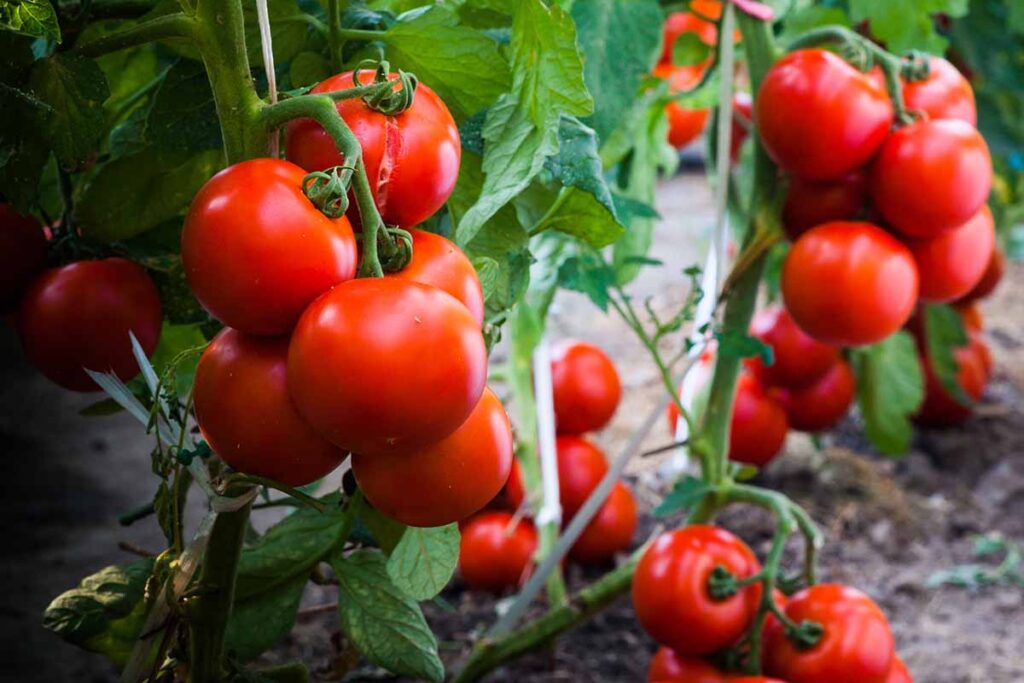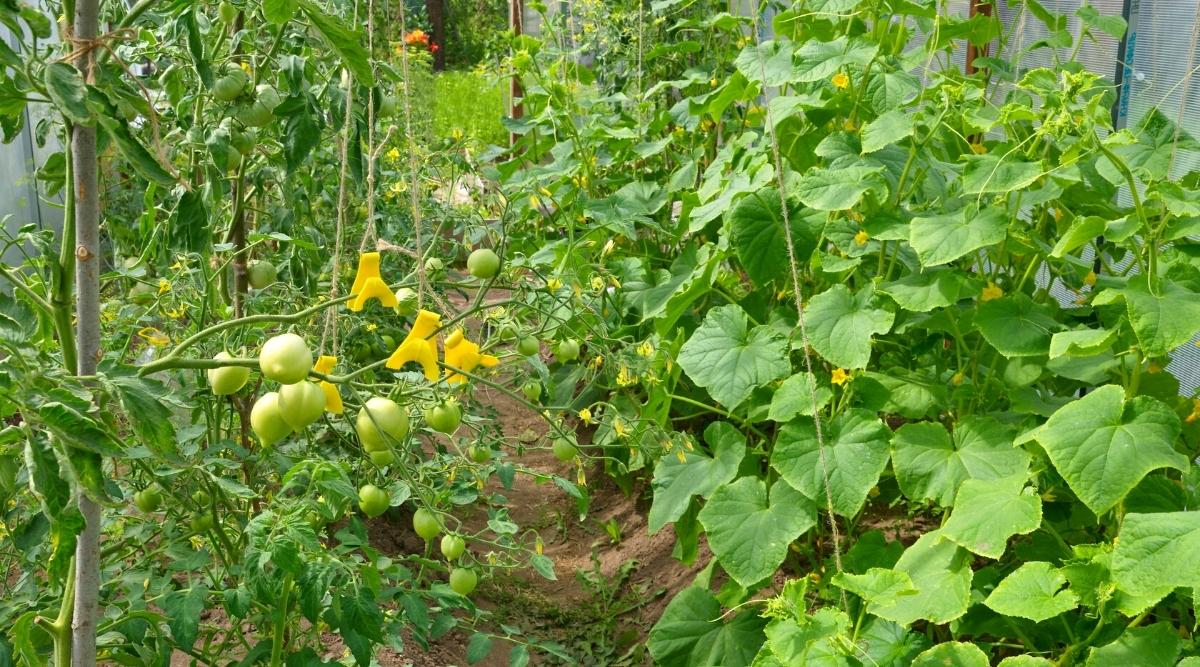Deciding when to plant your tomatoes and cucumbers can significantly affect the success and productivity of your garden. Timing is crucial when it comes to these warm-season crops, as they thrive in specific temperature ranges and growing conditions. Understanding the optimal planting window for tomatoes and cucumbers will enable you to maximize their yields and ensure a bountiful harvest. In this article, you will explore the ideal planting time for these popular vegetables and discover the key factors to consider for a successful cultivation.

Choosing the Right Time
Consider the Planting Season
When it comes to planting tomatoes and cucumbers, considering the planting season is crucial. These warm-season vegetables thrive in temperatures ranging from 70 to 85 degrees Fahrenheit. In general, it is recommended to plant tomatoes and cucumbers after the danger of frost has passed and soil temperatures have warmed up to around 60 degrees Fahrenheit.
Know Your Climate
Understanding your climate is essential for successful tomato and cucumber cultivation. Tomatoes are sensitive to cold temperatures and require a long growing season, typically lasting 60 to 90 days. Cucumbers, on the other hand, prefer warmer temperatures and a shorter growing season of around 50 to 70 days. Researching your local climate and determining the average first and last frost dates will help you plan your planting schedule accordingly.
Watch for Frost
Frost can be detrimental to both tomatoes and cucumbers. These heat-loving plants are highly susceptible to damage or even death when exposed to freezing temperatures. It is crucial to wait until after the last expected frost date in your area before planting tomatoes and cucumbers. Keep a close eye on weather forecasts and protect your plants with row covers or other protective measures if a late-season frost is predicted.
Consider the Temperature
Temperature plays a significant role in the successful growth of tomatoes and cucumbers. While both plants require warm temperatures, there are slight variations in their preferences. Tomatoes thrive in daytime temperatures between 70 and 85 degrees Fahrenheit, with nighttime temperatures above 60 degrees Fahrenheit. Cucumbers, on the other hand, prefer slightly higher temperatures, with daytime temperatures ranging from 75 to 85 degrees Fahrenheit and nighttime temperatures above 65 degrees Fahrenheit. Planting during periods of consistent warm weather will ensure optimal growth and yield for your tomatoes and cucumbers.

Planting Tomatoes
Determining the Planting Date
To determine the ideal planting date for tomatoes, it is important to consider the average last frost date in your area. Planting should occur at least two weeks after the last expected frost date to avoid any potential damage to the young plants. Additionally, check the recommended days to maturity for the tomato variety you have chosen, as this will help you calculate the ideal planting date.
Starting Indoors or Outdoors
Tomatoes can be started indoors or directly seeded outdoors, depending on your preferences and the climate in your area. Starting tomatoes indoors allows for an earlier start to the growing season and provides more control over the plants’ initial growth. Indoor seed starting should begin 6 to 8 weeks before the desired planting date. However, if you live in a region with a long growing season, directly seeding tomatoes outdoors may be a viable option.
Preparing the Soil
Before planting tomatoes, it is crucial to prepare the soil properly. Tomatoes thrive in well-drained, fertile soil with a pH level between 6.0 and 7.0. Amend the soil with organic matter, such as compost or well-rotted manure, to improve its structure and nutrient content. It is also beneficial to incorporate a balanced fertilizer to provide essential nutrients for healthy plant growth.
Transplanting Seedlings
When transplanting tomato seedlings into the garden, there are a few key considerations to keep in mind. Choose a sunny location with at least 6 to 8 hours of direct sunlight per day. Dig a hole deep enough to cover the lower leaves of the seedling, as tomatoes have the ability to develop roots along their stems. Gently remove the seedling from its container and place it in the hole, ensuring it is planted at the same depth it was growing in its container. Firmly press the soil around the plant and water thoroughly.
Providing Proper Support
Tomatoes are indeterminate plants that continue to grow and produce fruit throughout the entire growing season. Therefore, providing proper support is crucial to prevent the plants from sprawling on the ground, which can lead to disease susceptibility and reduced airflow. There are various support options available, including tomato cages, stakes, or trellises. Choose a method that suits your space and the number of plants you are cultivating, ensuring the support system is sturdy enough to bear the weight of the growing tomatoes.

Planting Cucumbers
Determining the Planting Date
Similar to tomatoes, determining the planting date for cucumbers depends on the last frost date in your area. Cucumbers are more sensitive to cold temperatures, so it is essential to wait until after the danger of frost has passed and the soil has warmed up to at least 60 degrees Fahrenheit before planting. Additionally, consider the recommended days to maturity for the cucumber variety you have chosen to calculate the ideal planting date.
Starting Indoors or Outdoors
Cucumber seeds can be started indoors, but they also have an excellent tolerance for direct seeding outdoors. Starting seeds indoors provides a head start, allowing for earlier planting. However, cucumbers do not transplant well, and their delicate roots can be easily disturbed. If your region has a climate suitable for direct seeding, it is recommended to skip the indoor start and sow the seeds directly into the garden.
Preparing the Soil
Cucumbers thrive in well-drained, nutrient-rich soil. Before planting, prepare the soil by incorporating organic matter, such as compost, to improve soil structure and fertility. Cucumbers prefer slightly acidic to neutral soil with a pH level between 6.0 and 7.0. A soil test can be beneficial to ensure the proper pH level and nutrient balance for optimal cucumber growth.
Transplanting Seedlings
When transplanting cucumber seedlings, it is crucial to handle them with care to avoid damaging their delicate roots. Create mounds or raised beds to improve soil drainage and warm up the soil more quickly. Space the seedlings according to the recommended spacing for your particular cucumber variety. Gently remove the seedlings from their containers and transplant them into the prepared soil, ensuring they are planted at the same depth they were growing in their containers. Water thoroughly after transplanting to settle the soil and help the seedlings establish.
Providing Proper Support
Cucumbers are vining plants that require support to climb and grow upright, optimizing space and airflow. There are various support options available for cucumbers, including trellises, stakes, and even fences. Providing support not only keeps the plants organized but also helps prevent diseases and pests by keeping the foliage off the ground. Choose a support system that suits your gardening space and the growth habit of the cucumber variety you are cultivating.

Maintenance and Care
Watering
Proper watering is crucial for the health and productivity of both tomatoes and cucumbers. These vegetables require consistent moisture to thrive but are also susceptible to diseases if kept too wet. Aim to provide 1 to 1.5 inches of water per week, either through rainfall or irrigation. Water deeply and avoid wetting the foliage, as this can increase the risk of foliar diseases. Mulching around the plants can help conserve moisture and reduce weed competition.
Fertilizing
Regular fertilization is essential to support the vigorous growth and fruit production of tomatoes and cucumbers. Before planting, incorporate a balanced slow-release fertilizer into the soil to provide a steady supply of nutrients throughout the growing season. Additionally, side-dress the plants with a nitrogen-rich fertilizer when they begin to flower and fruit. Be cautious not to over-fertilize, as this can lead to excessive vegetative growth and reduced fruit production.
Pruning
Pruning plays a vital role in maintaining the health and productivity of tomato and cucumber plants. Remove any suckers, which are secondary branches that emerge from the leaf axils, to promote better airflow and focus the plant’s energy on fruit production. For cucumbers, it is also beneficial to remove any damaged or yellowing leaves to prevent the spread of diseases. Pruning should be done regularly throughout the season, but avoid excessive pruning that can stress the plants.
Pest and Disease Control
Both tomatoes and cucumbers are susceptible to various pests and diseases that can impact their growth and yield. Common pests include aphids, whiteflies, and tomato hornworms for tomatoes, and cucumber beetles and powdery mildew for cucumbers. Regular monitoring of your plants and early intervention are key to preventing and managing pest and disease issues. Implementing cultural practices such as crop rotation, proper spacing, and removing affected plant material can help reduce the risk of infestations and diseases. Consider using organic pest control methods if possible to minimize environmental impacts.
By following these guidelines for choosing the right time, planting tomatoes and cucumbers, and providing proper maintenance and care, you will be on your way to a successful harvest of delicious homegrown vegetables. Enjoy the rewards of your efforts and savor the flavors of freshly picked tomatoes and cucumbers from your own garden.




